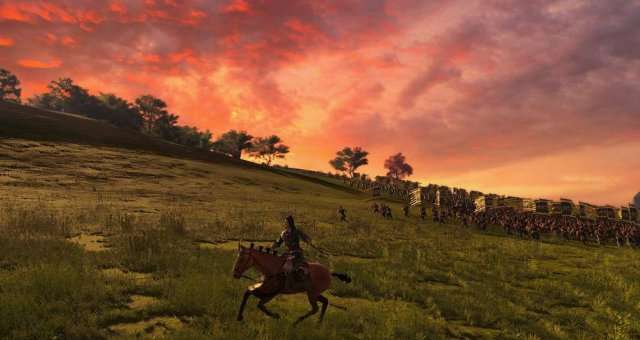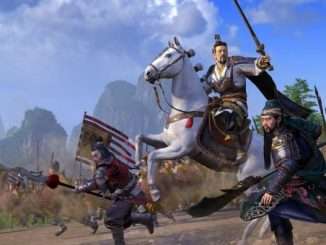
Other Total War: Three Kingdoms Guides:
- Getting Started.
- Beginner’s Guide (Tips and Tricks).
- Advanced Tips and Tricks.
- Resources and Campaign Maps.
- Damage Types and Effects.
- Spies & Espionage Guide.
- Zone of Control Guide.
- Administrators Guide.
- Commandery Guide.
- Fortifications Guide.
- Formations Guide.
- Diplomacy Guide.
- Factions Guide.
- Terrain Guide.
- Fatigue Guide.
- Morale Guide.
- Armies Guide.
- Unit Abilities.
- Battle Types.
- Siege Guide.
- Court Guide.
- Duels Guide.
Unit Types
The armament, apparel and quality of different units grant them specific roles on the battlefield. Getting the most out of an army is all about manoeuvring units into positions where they can optimally perform their roles against targets most vulnerable to their attacks.
Units may have the terms light, medium or heavy in their title. These refer to the unit’s armour but, by inference, can help you make broad assumptions about other aspects of the unit. Elite warriors tend to get more expensive and effective armour for example, so it’s reasonable to assume that heavy units tend to have higher morale, and will be better fighters. Heavier troops have greater mass too, so medium and heavy cavalry units will generally carry greater momentum, and therefore deal greater impact damage when charging.
Some units carry shields into battle, reducing any melee and ranged damage they are dealt – but only from the front.
If a strategist character is present in an army, units will be granted special formations to enhance their capabilities in battle.
Melee Infantry
Armed with swords or axes and bearing shields, melee infantry are your principle assault troops as they have a good melee charge bonus. They are effective at dealing damage against polearm and ranged infantry but are less effective against cavalry.
Polearm Infantry
Reasonable all-rounders and your principle defensive troops, pike and spear infantry form the backbone of many armies. While they generally do not deal as much damage as melee infantry, they are much better at fighting cavalry, and when stood still, gain the braced and charge reflection VS mounted abilities against frontal charges.
Ranged Infantry
Infantry armed with bows and crossbows can damage enemy units from afar, but are generally lightly armoured and less effective in melee than other infantry types, and so are best placed behind the front line. They are particularly vulnerable to cavalry, which can swiftly manoeuvre round the front line to access them.
Bows have greater range than crossbows and are faster to fire, while crossbows have a shorter range and deal significantly more armour-piercing damage. Repeater Crossbows have a faster rate of fire than Crossbows, but deal no AP damage.
the faster a unit is moving, the harder it is to hit. Archers will therefore do a lot more damage to a tightly-formed block of static or slow-moving troops, for example, than they will to a loosely spaced unit of cavalry galloping at full speed.
Cavalry
Cavalry units move rapidly, which means they can outmanoeuvre infantry and choose where to engage. This makes them versatile and grants them a range of uses on the battlefield.
Their speed and mass combine to deal major impact damage when they charge, reflected by their high melee charge bonus rating. If cavalry are locked in static melee with an enemy unit, it’s useful to pull them out of combat, set them up to charge again and deal more impact damage. This is known as cycle charging.
Cavalry make an excellent counter to archers, as they can manoeuvre around the enemy army to reach them, and are useful for running down or chasing routing troops from the field, as routing troops will not recover morale while continuously engaged.
Polearm infantry, with their braced and charge reflection VS mounted abilities, should never be charged face-on by cavalry. They are best pinned by swordsmen or spearmen, with cavalry performing flank or rear charges, where they cannot bring their polearms to bear.
Shock Cavalry
- Shock cavalry wield lances, and cause tremendous impact damage. They are therefore best used when charging, and are the best type of cavalry to use against other cavalry. When their charge bonus has faded, they do not deal as much damage over time as melee cavalry, and should be pulled out and cycle-charged to maintain optimal damage output.
Ranged Cavalry
- Ranged cavalry carry bows, granting them the ranged damage of archers combined with the speed and manoeuvrability of cavalry. Due to their cavalry speed and mass, they can still cause impact damage when charging, though are less effective at this than shock or melee cavalry.
Melee Cavalry
- Melee cavalry are armed with swords and shields, so are better able to weather arrow-fire, and deal greater damage over time when locked in melee than shock or ranged cavalry.
Ranged Artillery
Ranged artillery pieces such as the trebuchet are powerful long-range weapons which hurl large projectiles great distances. They can damage and destroy city walls, bastion artillery, defensive towers and gates, and may be commanded to fire different ammo types. Artillery is extremely vulnerable to melee attack however and should be protected by other units.





Be the first to comment